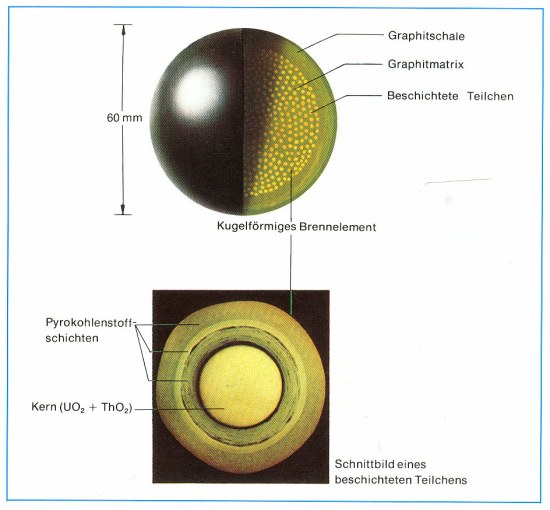Newsletter XXIV 2021 | |
May 27th to 31th
***
| 2024 | 2023 | 2022 | 2021 | |
| 2020 | 2019 | 2018 | 2017 | 2016 |
| 2015 | 2014 | 2013 | 2012 | 2011 |
| Current news+ | Background knowledge |
***
May 31, 2021 - Exhibition on radioactivity: In the spirit of the aces
*
Geothermal energy in Germany
May 30th 2021 - Energy from the depths of the earth
*
May 30, 2021 - Solar expansion still in slow motion
*
May 29, 2021 - Nuclear power plant with CO₂ vacuum cleaner
*
May 29, 2021 - Spain presents plans to convert to renewables
*
May 29, 2021 - US soldiers unveil atomic bombs in Europe via app
*
May 28, 2021 - Shell loses climate case - The Hague judgment and the consequences
*
New start of the solar industry:
May 28, 2021 - Meyer Burger opens solar module factory at the former Solarworld location
*
May 28, 2021 - GLOBAL 2000 objection to Mochovce 3 nuclear power plant permit
*
May 28, 2021 - NRW does not want to use the opening clause for solar systems on agricultural land
*
May 28, 2021 - China is building 2 mysterious nuclear reactors - researchers are concerned
*
May 27, 2021 - Asse coordinator for nuclear waste collection: "Time is running out"
*
The breakdown log
May 27, 2021 - Krsko nuclear power plant just missed disasters
*
May 27, 2021 - First Power-to-X atlas
Top | |
| Current news+ | Background knowledge |
***
Current news+
**
May 27, 2021 - How Japan's nuclear lobby is betting on a new climate plan
The government aims to cut Japan's emissions twice as fast as previously planned by 2030. The industry senses the chance for a revival of nuclear power plants.
Japan's freshly drafted new climate plan gives new impetus to the nuclear lobby, which has been on the defensive since the 2011 Fukushima disaster. As early as March, the Keidanren business association openly called for the number of reactivated nuclear reactors to be increased from the current nine to 2030 by 30. "Not using nuclear power is not an option," said Chairman Hiroaki Nakanishi in February. A discussion must now begin about who can develop a new vision for nuclear power ...
Top | |
| Current news+ | Background knowledge |
***
Background knowledge
**
reaktorpleite.de
Map of the nuclear world:
The nuclear lobby is the state in every state ...
The German version of this world map:
https://www.google.com/maps/d/viewer?mid=1fCmKdqlqSCNPo3We1TWZexPjgNDQOaLD
**
The search in the reaktorpleite.de with the search term
| Japan's nuclear lobby | ||
brought the following results, among others:
Why Japan is sticking to nuclear power
July 22, 2018 - Japan's base load
*
October 26, 2013 - Controlled by nuclear lobby
**
Wikipedia
Nuclear_in_Japan
Since Fukushima, the Japanese have been saving massive amounts of electricity in order to be able to shut down as many nuclear reactors as possible as a precaution - there are fears of further earthquakes or aftershocks.
On August 26, 2011, only 18 of the former 54 Japanese nuclear reactors were in operation. In December 2011, 9 reactors supplied electricity, in February 2012 only 2 of the former 54 reactors were connected to the grid. Nevertheless, the energy saving ordinance applicable in summer was repealed in the weaker demand in winter.
In March 2012, the penultimate nuclear reactor still running went offline as planned; in May 2012 the last reactor, reactor 3 in the Tomari nuclear power plant (a pressurized water reactor with 866 MW net output; connected to the network since December 2009), went offline for maintenance work; since then Japan has been nuclear power-free. In many parts of Japan, local authorities persistently refused to restart nuclear reactors ...
**
AtomkraftwerkePlag
2011-2012: demonstrations, shutdowns and exit plans
Since the summer of 2011, Japan has been increasingly using renewable energies, which should cover a fifth of its energy needs by 2020. In April 2012, plans were also announced to promote renewable energies based on the German model. In addition, oil, natural gas and coal have to be imported. The decommissioning of all Japanese reactors also has positive effects: The Japanese photovoltaic market grew threefold in 2013 compared to the previous year. Systems with a capacity of 7 gigawatts were installed.
Solar systems have also been greatly expanded in recent years, and renewable energies are expected to achieve a share of 2030 to 25% by 30.
From 2012: U-turn under Abe
After the LDP's election victory in December 2012, it quickly became apparent that the nuclear phase-out should be reversed, even though 70% of the Japanese were opposed to nuclear power. Immediately after taking power, the new Prime Minister Abe announced that he would reconnect nuclear power plants that had been shut down and build new reactors. The new environment minister, Nobuteru Ishihara, declared that an atomic phase-out was irresponsible and described the popular protests as "mass hysteria".
On January 16, 2013, the IAEA moved 47 Japanese reactors to the "Long-Term Shutdown" category, which would have reduced the number of reactors active worldwide to 390. At the request of the new Japanese government, this was reversed three days later ...
**
Further to: Newspaper article 2021
***
Top | |
| Current news+ | Background knowledge |
***
Donation appeal
- The THTR circular is published by the 'BI Environmental Protection Hamm' and is financed by donations.
- The THTR circular has meanwhile become a much-noticed information medium. However, there are ongoing costs due to the expansion of the website and the printing of additional information sheets.
- The THTR circular researches and reports in detail. In order for us to be able to do that, we depend on donations. We are happy about every donation!
Donations account:
BI Umweltschutz Hamm
Purpose: THTR circular
IBAN: DE31 4105 0095 0000 0394 79
BIC: WELADED1HAM
***
***



